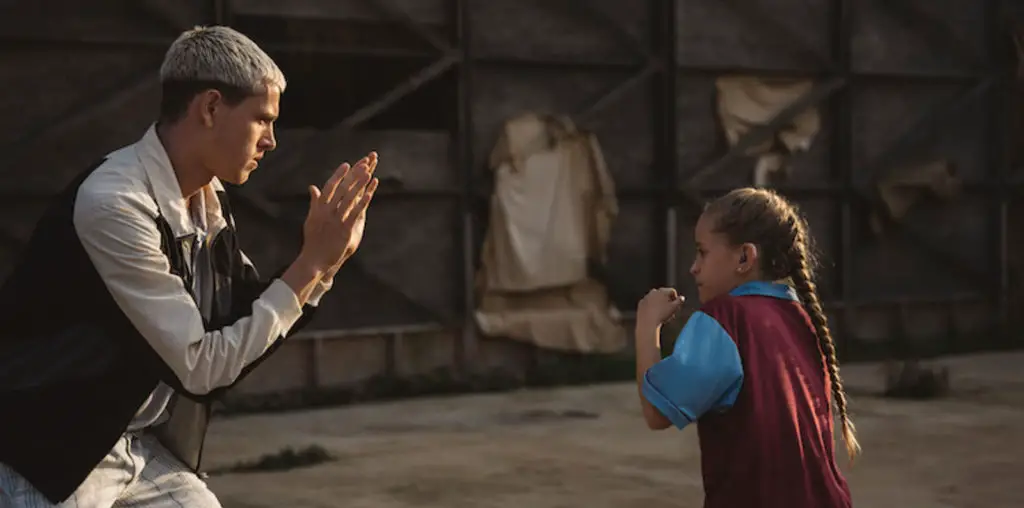
“Make-Out with Violence” is proud of its dual identity. The film’s promotional copy describes itself as a teen coming-of-ager with a zombie theme organic to the mix. Such a genre revision sounds appealing to fans who love a good zombie yarn but hate to see the same dreck regurgitated over again. On top of that, we have a curiously ambiguous title which could lead in various directions.
Yet “Make-Out” suffers from an identity crisis. It includes a compelling zombie in the form of Wendy (Shellie Marie Shartzer) who, quite fittingly, rises like a body no longer in control of its own muscular web. She moves as if death has hit her hard and her soul is still trapped, submerged under the bones’ ague. This results from the directing team the Deagol brothers’ attention to their centerpiece character – or, I should say, the character who should have been the centerpiece.
The filmmakers seems attentive to their “living” characters as well, all of whom are coming-of-age in their own way. The Deagols know they want drama, and listen for their players to deliver it. But their reliance on a speculative device suggests they don’t hold too much trust in their living cast. The zombie girl remains a dead metaphor, representing the constant love of Patrick (cowriter Eric Lehning) who, unable to let her go, keeps her body in a bathtub. After her promising arrival, when she rises from the dead in a scene meant to shock (the details of the girl’s death remain mysterious), she decays into an inert subplot, a gimmick bent on convincing us we’re witnessing a clever piece of quirkiness. Before long, it feels as if the zombie girl will mouth the words, “What am I doing in this film?”
The zombie myth is nothing to treat slightly – with a light touch, sure, but not a non-committal one. The Deagols want an episodic teen reverie, and such a product would have been interesting. But they blend in more they can handle and end up confusing themselves.
And it doesn’t help that their living characters are too ambiguous for their own good. Carol (Cody DeVos, also a co-writer), as Patrick’s twin brother, is surely the odder half of the two, even if he’d cringe at that thought of hoarding the dead for his own ends. This stilted portrayal may have been intentional, since there is some talk of how Carol had problems in the womb. But we’re unsure if the actor’s quirkiness bled into the role. It’s an unrealized element that leads to audience confusion instead of interest. A young narrator is also used then discarded at free will. As soon as we wonder if the narrative is in his point of view, he’s gone, only to return later as a device, and not a real character.
One thing the Deagols seem committed to is indie rock, which occupies the score so much that we wonder if the film was made for this purpose. (Sure enough, a beefed up soundtrack is on sale.) Fans will love it, claiming that the music adds a necessary dimension to the film. Everyone else will wonder why the soundtrack seems unconcerned with the tone of the film it is playing along with. Or, perhaps the film is once again confused about its purpose and direction.
